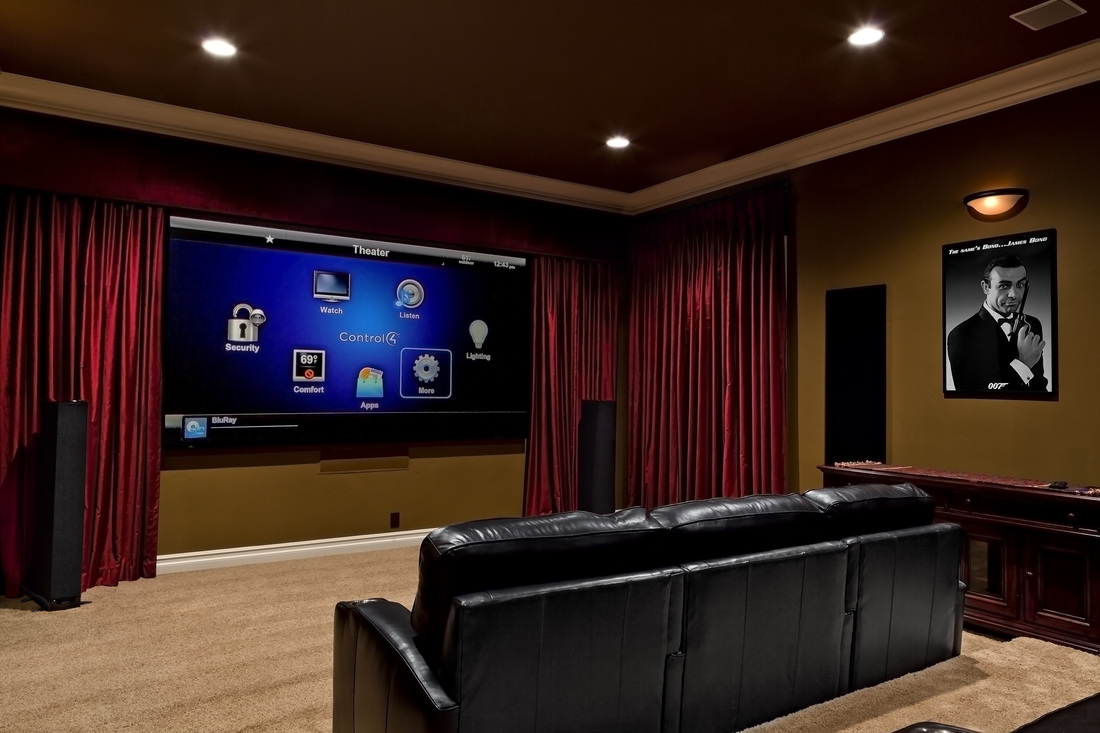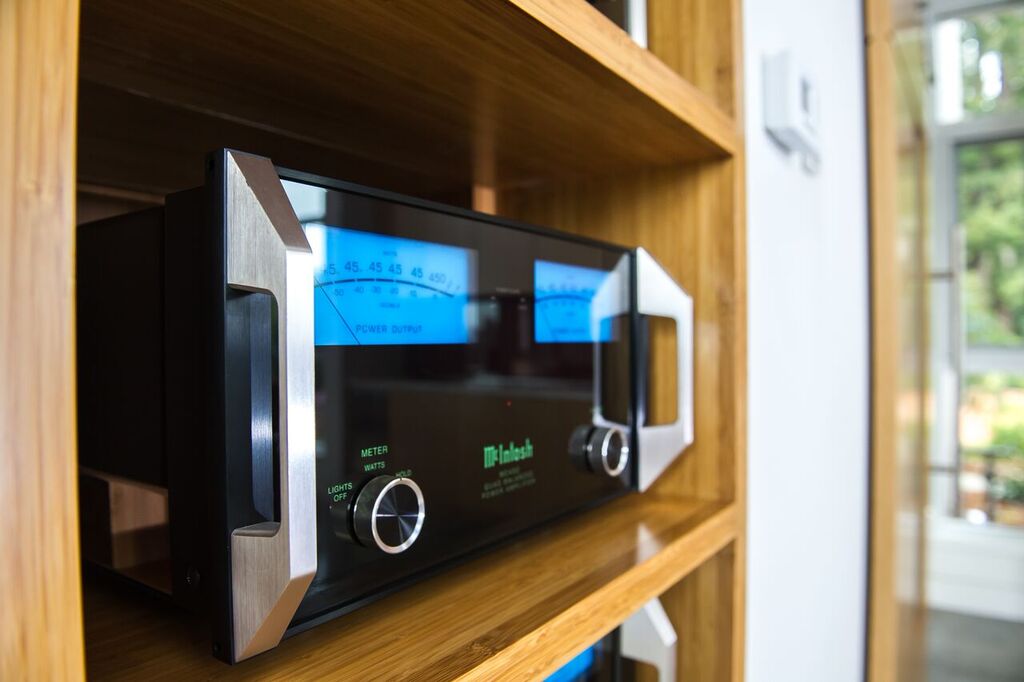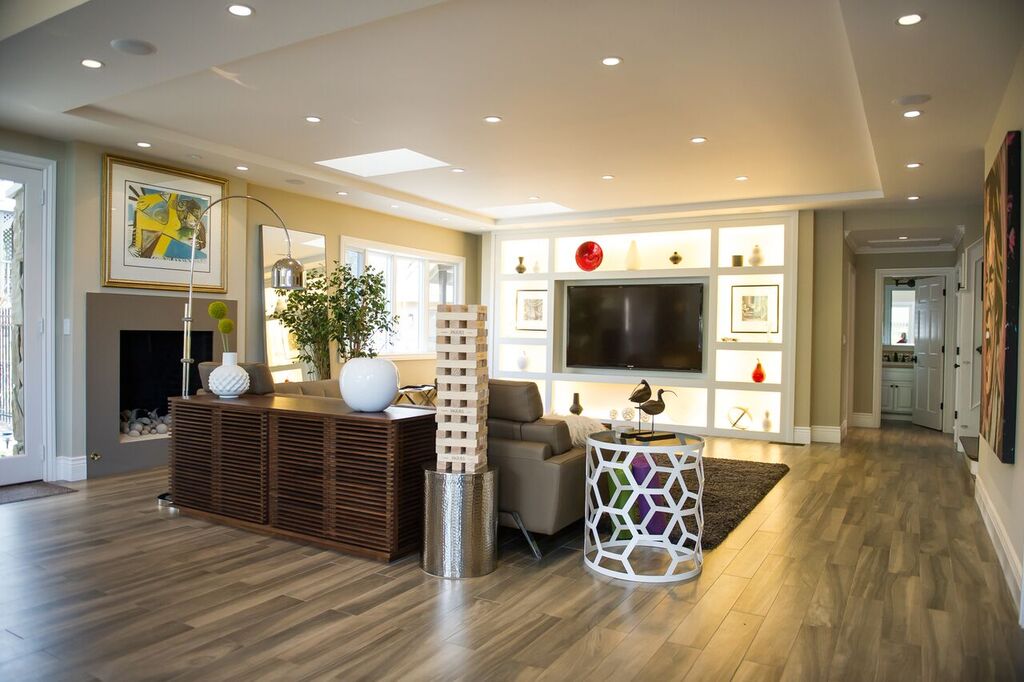Tips for Making the Most of Your Home Theater and A/V System

When planning for a new home theater or audio/video system, a carefully considered approach can help to maximize your investment. Photo: Avid Home Theater ©2019
Are you planning to install a home theater and/or high-end audio/video system? To make the most of your investment, consider these tips for designing, installing and using your system.
Engage an A/V contractor early in the process.
If your system is part of a larger remodeling project, it’s wise to get an A/V contractor involved during the planning phase. This will allow them to collaborate with your architect, designer, and remodeling contractor and ensure your system’s components are installed in a cohesive way. Your A/V contractor will address critical system aspects such as:
- Speaker location: While speakers are often located standing on the floor or on shelving, they can also be situated within walls or overhead to achieve a minimalist design. In this case, an A/V contractor will work with the remodeling team to incorporate speakers and wiring into the project’s design scheme. Additionally, an A/V specialist can determine the ideal speaker arrangement for home theater surround sound.
- Seating orientation: While often overlooked, seating orientation is an important aspect of home theater design. For example, the presence of windows needs to be factored in to prevent issues with glare, as does the seats’ proximity to adjacent rooms to prevent unwanted noise. A professional A/V contractor will know what seating orientation will give you the best possible home theater experience.
- Room acoustics: Since every room has its own unique acoustical characteristics, it can be challenging to dial in the sound for an A/V system. While most high-end receivers feature automatic EQ capabilities that help compensate for room acoustics, an A/V specialist can provide hands-on expertise when it comes to fine-tuning this complex dynamic.

An experienced A/V contractor can fine-tune your system’s sound equalization in accordance with room acoustics. Photo: Avid Home Theater ©2019
Choose hardwired speakers.
These days, many homeowners assume wireless speakers are the way to go, but according to Ted Liu of Avid Home Theater, this couldn’t be further from the truth. “With wireless speakers, the reliability tends to suffer,” he explains. “Not only do they add to the many wireless signals already going through your home, they’re prone to interference. Even something as simple as your neighbor turning on a vacuum can affect the signal’s integrity. That’s why, when it comes to reliability and sound quality, nothing beats a hardwired speaker.”
Buy the biggest TV you can afford.
“I’ve never had a customer come back and say, ‘I wish I’d chosen a smaller TV,’” says Mr. Liu. “However, I often hear from customers who wish they’d chosen a bigger one. Whether it’s the result of a spousal disagreement or a desire to save money, choosing a smaller TV usually results in dissatisfaction later. So, don’t short yourself—choose a TV size you’re going to be happy with for the long term.”
Get a quality HDMI cable.
When browsing HDMI cables, you’ll notice they come in various prices, from fairly cheap to very expensive. As with most things, when it comes to HDMI cable quality, you get what you pay for. Not only do cheap HDMI cables provide inferior picture quality, they’re prone to connection issues that can cause picture and sound to intermittently cut out. Considering the amount of money you’ve invested in your home theater, it only makes sense to invest in an HDMI cable that provides optimal performance.
Label your cables.
Besides buying quality A/V cables, Tito Pabon, owner of High Definition Designs, recommends labeling them before hooking up your system. “This simple step can save you a lot of time and trouble if you ever need to disconnect or relocate your receiver in the future,” he affirms. “Most A/V receivers come with pre-printed labels for this purpose. As you connect each A/V source, find the corresponding label and attach it to the cable. That way, if any of your cables get disconnected, you’ll know exactly where to reconnect them.”

One simple piece of advice for designing your A/V system: Buy the biggest TV you can afford. Photo: Avid Home Theater ©2019
Consider system control.
With the complexity of modern home theater and A/V systems, it’s important to have a good understanding of how to operate yours. If your system is going to be used by other members of your household, make sure everyone knows how to work the remote control—otherwise, the wrong buttons will get pressed, which may undo your programmed settings.
Take your sound system outside.
Here in the Bay Area, we spend almost as much time outside as we do inside, which is why an outdoor extension of your stereo system can be a great investment. However, Mr. Liu says that due to the challenging dynamics of outdoor sound, proper design is crucial. “Some homeowners think they can just aim a pair of large speakers at their recreation area, but this can result in a lot of sound bleed into neighboring properties. A better approach is to place small satellite speakers throughout the area. By providing a more precise, targeted distribution of sound, you’ll be able to enjoy your music at the desired volume without disturbing your neighbors.” To ensure proper design and installation of your outdoor sound system, it’s a good idea to consult a professional A/V contractor.
Use Diamond Certified Resource to find top rated companies.
Related Articles
The Homeowner's Guide to Home Video, Audio & Automation
Get Expert Advice From Owners of Top Rated Local Companies
Become a Diamond Certified Preferred Member (Always Free)